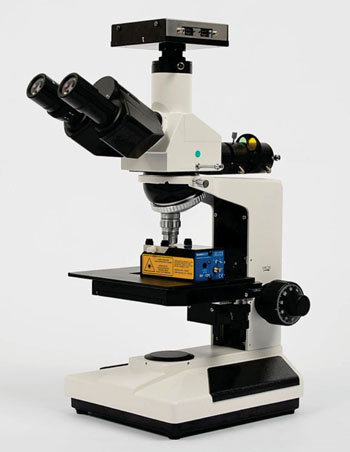Blood Test Detects Chronic Traumatic Encephalopathy During Life
By LabMedica International staff writers
Posted on 22 Mar 2016
Chronic traumatic encephalopathy (CTE) is a tauopathy associated with prior exposure to repetitive head impacts, such as those incurred through American football and other collision sports and diagnosis is made through neuropathological examination.Posted on 22 Mar 2016
A method has been developed for measuring plasma exosomal tau. Exosomes are very small vesicles that are released from all types of cells throughout the body, including brain cells. They can be isolated in all body fluids, including plasma, a component of blood.

Image: The NanoSight LM10 instrument provides an easy-to-use, reproducible platform for nanoparticle characterization (Photo courtesy of Malvern Instruments).
Scientists at Boston University School of Medicine (MA, USA) and their colleagues examined 78 former National Football League (NFL) players and a control group of 17 former non-contact sport athletes. Extracellular vesicles were isolated from plasma. Fluorescent nanoparticle tracking analysis was used to determine the number of vesicles staining positive for tau. Blood was drawn by venipuncture and immediately processed. Plasma samples were stored in 0.75 mL tubes at -80 °C, packed in dry ice, and shipped overnight in one batch to the Exosome Sciences laboratory (Monmouth Junction, NJ, USA).
Extracellular vesicles were isolated from the plasma samples by size exclusion chromatography. Plasma samples were applied to the column and it was then run isocratically. The elution was monitored at 280 nm and the void volume material (exosome fraction) was collected and pooled. The size profiles and concentrations of the chromatographically isolated exosomes were performed using the Nanosight LM10 instrument (Malvern Instruments Ltd.; Malvern, UK) equipped with a 405 nm laser, a scientific complementary metal-oxide-semiconductor (sCMOS) camera and Nanoparticle Tracking Analysis (NTA) software.
The method of measuring plasma exosomal tau is referred to as a TauSome. The groups did not differ in total plasma exosomes, but the NFL group had significantly higher plasma exosomal tau than the control group. The C-statistic is maximized when the plasma exosomal tau level is set to 0. Using 0 as a threshold resulted in 82% sensitivity, 100% specificity, 100% positive predictive value and 53% negative predictive value. The number of tau-positive plasma exosomes was significantly correlated with performance on standardized tests of memory and psychomotor speed; the higher the TauSome level, the worse the performance.
Jim Joyce, Founder of Exosome Sciences and Chairman and CEO of Aethlon Medical (San Diego, CA, USA), said, “We are extremely pleased that our initial study data has been published and we appreciate forthcoming opportunities to further advance our TauSome biomarker as a noninvasive solution to detect and monitor CTE in living individuals.” The study was published on February 10, 2016, in the Journal of Alzheimer's Disease.
Related Links:
Boston University School of Medicine
Exosome Sciences
Malvern Instruments Ltd.









 Analyzer.jpg)




